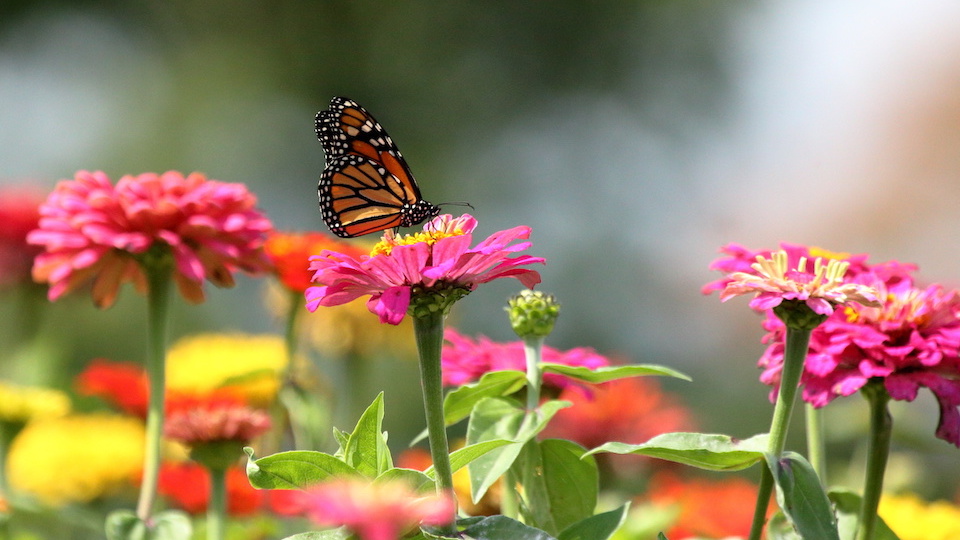The way we construct and care for our gardens really matters. Of course, it matters to those of us who will enjoy watching the garden grow and reaping the benefits of a well-tended space. However, a well-constructed garden can also be of great benefit to the wild creatures who visit and even choose your garden as their home. Remember, a diverse garden loaded with native plants is the best place to start.
Here are nine ways to bring more wildlife up close and personal in your garden space.
Bird nesting boxes and feeders
Birds are a huge asset to the garden ecosystem. Placing feeders and boxes in your garden will ensure that they visit often and thrive. Position nesting boxes high and offer a variety of seed types as well as suet and freshwater. Many birds also like to hide and nest in brush, so if possible, leave an area of your hard wild and natural for the birds.
Put your mower away
One of the biggest things you can do to attract wildlife to your yard and garden is to stop cutting your lawn (at least in a portion of your landscape). Long grass provides the perfect habitat for many plant and insect species, including butterflies, wildflowers, and bees.
Grow climbing plants
Many types of climbing plants such as trumpet vine, ivy, clematis, passionflower, and more offer valuable food and pollen. Grow climbers on fences, decks, trellises, and walls.
Create a natural insect hotel
Reserving a portion of your landscape for the creation of an insect hotel will help to draw more wildlife to your garden. Insects such as spiders and beetles love rotting wood and twigs as well as piles of rocks.
Use plenty of compost in garden
Don’t skimp on well-aged compost in your garden beds. Making and using your own compost is not only a great way to use up kitchen scraps and yard waste, but it also creates a very inviting environment for worms, woodlice, frogs, and other insects. Be sure that you understand composting rules and don’t put any raw food into your compost as it will attract unwanted guests.
Plant fruit trees
Apple trees are a great addition to any garden. Not only do they produce beautiful flowers for pollinators, but also delicious fruit for you to eat. Choose fruit trees that do best for your growing zone, and be sure to pick the best size tree as well. Sometimes dwarf trees are best and can be planted in containers around your yard or on a patio or deck. The best time to plant fruit trees is in the fall.
Install a water feature
Creatures of all kinds love a freshwater supply. There is no need to go big, a simple year-round water source will do. Birdbaths, ponds, or even fountains will do the trick. If you choose a pond, be sure to line it and place it in a part sunny and part shady location with plenty of water lilies to keep it oxygenated. If it is deep, place twigs and rocks around the edge and across the pond so that birds and other wildlife have something to stand on when they get a drink.
Loads of beautiful flowers
Don’t skimp on flowers, the more, the better when it comes to creating a wildlife habitat. Pack your garden with everything from spring bulbs to late flowering perennials. Some great options include asters, marigolds, nasturtiums, and calendulas.
Don’t be afraid of the weeds
Although some gardeners are quick to formulate a plan of attack on weeds, some can be highly useful. That’s right; many weeds help to make a great habitat for pollinators, including bees, butterflies, and other insects. Allowing weeds to grow, at least in some parts of your garden, will help increase beneficial insects that can ward off pests. Here are three popular volunteer plants that pollinators love.
- Milkweed – Milkweed attracts a variety of pollinators, including bumblebees, native bees, wasps, and large butterflies. The monarch butterfly has somewhat co-evolved with milkweed. Basically, the timing of milkweeds coincides beautifully with the monarch’s summertime migration from across North America, where these delicate creatures travel up to 3,000 miles to find the right plant to host caterpillars. Each generation of butterflies survives only a few weeks – they lay eggs and then die. Without enough milkweed plants, butterfly survival is threatened. There has already been a massive decline in the monarch population over the last decade.
- Stingless deadnettle – Purple deadnettle is a small flowering herb that grows in all parts of the U.S. apart from regions that are really cold or really hot. These early-blooming flowers begin to bloom just as early spring arrives. This is right in time for honeybees who are hungry for the nectar. Deadnettle forms an excellent soft ground cover and is quite pretty. Allowing some deadneetle to bloom and thrive will mean that you are doing our part to keep important pollinators, like honeybees alive and thriving.
- Asters – There are over 250 types of asters, and no matter where you live in the United States, there is probably a native aster that you identify as a weed. Asters show their beautiful colors just before the nip of late autumn sets in. Hungry pollinators, looking for one last sweet snack before winter, depend on asters for sustenance.
Grab yourself a native plant guide to help you identify native species that will help to bring plenty of beautiful wildlife to your garden. Remember, doing just a bit to preserve pollinators has a massive, far reaching impact!
-Susan Patterson



